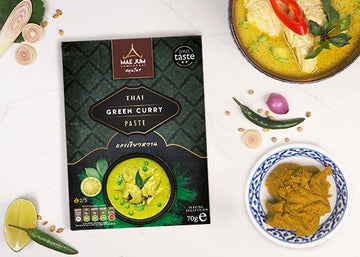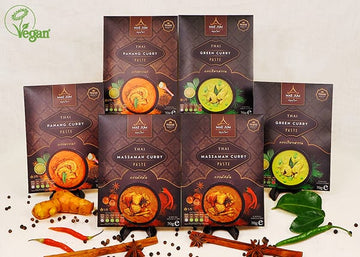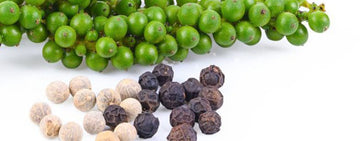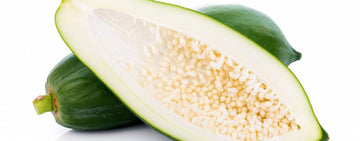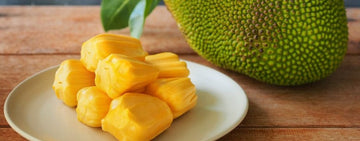Everything You Need to Know About Green Peppercorns: History, Uses, and Health Benefits
Peppercorns are one of the most common spices in kitchens worldwide, but did you know they were once more valuable than gold? In ancient Greek and Roman times, peppercorns were so prized that they were used as currency, and during the medieval period, they were even accepted in place of money for dowries, rent, and taxes. The humble peppercorn, now available in every supermarket, has a rich and fascinating history that few people know about.
In this blog, we’ll dive deep into one of the less common varieties of this ancient spice: the green peppercorn. We’ll explore its history, how it’s grown and processed, where you can buy it, how to cook with it, and the health benefits it offers. Whether you’re a seasoned home cook or a beginner looking to expand your spice cabinet, this guide will tell you everything you need to know about green peppercorns.
What are Peppercorns?
Peppercorns come from a plant known as Piper nigrum, a slow-growing perennial evergreen vine. This plant can take up to four years to reach the point where it starts producing fruit, and it takes about seven years to reach its full potential, after which it can continue to produce fruit for up to 20 years. In the wild, Piper nigrum can climb as high as 10 metres, supported by its dark green oval leaves and small greenish-yellow flowers that bloom in summer.
Once these flowers blossom, they ripen into the peppercorns we’re familiar with. Initially, the fruit appears green and remains in this state until it’s harvested or left to ripen further, at which point the berries turn red. All types of peppercorns—green, black, and white—come from the same plant. The main difference lies in how they are processed:
- Green peppercorns are harvested when they are still young and fresh. They can be used fresh, pickled, or brined.
- Black peppercorns are green peppercorns that have been left to dry. During the drying process, they shrink and darken, developing the spicy, robust flavour most people associate with pepper.
- White peppercorns come from fully ripened berries where the outer skin has been removed, leaving the pale inner seed. White peppercorns have a milder, earthy flavour.

Health Benefits of Green Peppercorns
Aside from their culinary versatility, green peppercorns also offer several health benefits. Like other peppercorn varieties, they contain a range of vitamins, minerals, and antioxidants that can support overall health.
1. Rich in Iron and Vitamin K
Green peppercorns are a good source of iron, which is essential for the production of red blood cells and the transport of oxygen throughout the body. They also contain vitamin K, which plays a vital role in blood clotting and bone health. Including green peppercorns in your diet can help boost your intake of these important nutrients.
2. High in Antioxidants
Green peppercorns contain piperine, a compound responsible for their heat, which has been shown to have antioxidant properties. Antioxidants help neutralise free radicals in the body, protecting cells from damage and reducing the risk of chronic diseases such as heart disease and cancer. Studies suggest that piperine may even have anti-cancer properties, particularly in hormone-dependent cancers, though more research is needed to confirm these effects.
3. Aids Digestion
Peppercorns, including the green variety, have long been used in traditional medicine to aid digestion. The piperine in green peppercorns can stimulate the production of digestive enzymes, helping to break down food more efficiently. This can improve nutrient absorption and prevent indigestion or bloating.
4. Supports Circulation and Relieves Cold Symptoms
The oil derived from green peppercorns is often used in traditional medicine to stimulate circulation and treat colds, flu, and muscle aches. Its warming properties can help alleviate symptoms of chills and exhaustion, making it a popular remedy during colder months.
How to Use Green Peppercorns in Your Cooking
Now that you know the benefits of green peppercorns, here are some tips on how to incorporate them into your cooking:
- Add to Sauces: Crush brined or fresh green peppercorns and stir them into creamy sauces for steak, chicken, or fish. The slight heat and burst of flavour pair perfectly with creamy, buttery bases.
- Incorporate into Curries: Add whole or crushed green peppercorns to your favourite Thai curry recipe for an extra layer of flavour. They work particularly well in green and Jungle curries.
- Enhance Marinades: Crush green peppercorns and mix them into marinades for grilled meats or seafood. The peppercorns will add a fresh, zesty flavour that complements a variety of spices and herbs.
- Use in Dressings: For a unique twist on salad dressings, add some crushed green peppercorns to a vinaigrette. Their mild spice will elevate simple salads and give them a more complex flavour.

Where to Buy and Store Green Peppercorns
Green peppercorns, while less common than black or white varieties, can still be found in various forms. Fresh green peppercorns are often sold in tropical regions year-round, but they can be difficult to source in the UK. If you’re lucky enough to live near an Asian supermarket or a speciality food store, you may be able to find them fresh. Alternatively, online retailers that specialise in Thai or Southeast Asian ingredients often stock fresh green peppercorns, although they tend to sell out quickly due to their limited availability.
More commonly, you’ll find green peppercorns preserved in brine or pickled. These are widely available in jars at speciality stores or online, and they offer a convenient way to incorporate green peppercorns into your cooking. Once opened, brined peppercorns should be stored in the refrigerator, where they can last for several weeks.
When choosing fresh green peppercorns, look for berries that are tightly clustered and have a slight sheen. These qualities indicate freshness and flavour. Because fresh green peppercorns are highly perishable, they should be used quickly or preserved if not immediately consumed.
Preparing and Cooking with Green Peppercorns
Green peppercorns are highly valued in French, Thai, and Western European cuisines, and their mild heat and fresh, slightly fruity flavour make them a versatile ingredient. Whether you’re adding them to seafood, poultry, grilled meats, or creamy sauces, green peppercorns offer a unique flavour profile that enhances the overall dish.
One of the key things to remember when working with green peppercorns is their delicate nature. If using fresh peppercorns, be gentle when rinsing them under cold water, as the berries can easily fall off the stem. They don’t require much preparation beyond a light rinse, and their texture adds a pleasant pop to dishes when cooked.
In Thai cuisine, green peppercorns play a starring role in dishes like Thai Jungle Curry (Gaeng Pa). Jungle curry is a fiery dish known for its bold, spicy flavours, and the inclusion of green peppercorns adds an extra burst of heat. Unlike more common Thai curries, Jungle Curry doesn’t use coconut milk, allowing the freshness of the ingredients, including the peppercorns, to shine through. When using green peppercorns in a spicy curry, it’s worth noting that they pack a punch—if you’re sensitive to spice, start by eating just one or two berries per bite until you get used to their heat.
French cuisine also makes great use of green peppercorns, particularly in peppercorn sauces. A creamy green peppercorn sauce pairs beautifully with steak, chicken, or pork. The slight heat and complex flavour of the peppercorns cut through the richness of the cream, creating a well-balanced, indulgent sauce.
Green peppercorns also complement other ingredients like white wine, mustard, and parsley, making them an excellent addition to seafood dishes, especially shellfish.
Conclusion: Green Peppercorns, A Unique Spice for Your Kitchen
Green peppercorns may not be as widely used as their black or white counterparts, but they offer a unique flavour profile that can enhance a wide range of dishes. Whether you’re using them to create a spicy Thai curry, a creamy French sauce, or as a topping for grilled meats, green peppercorns bring a fresh, mildly spiced complexity to your cooking.
Their health benefits, including their rich antioxidant content and ability to aid digestion, make them a valuable addition to your spice cabinet. Though they may be harder to find in the UK, sourcing fresh or brined green peppercorns is worth the effort if you want to elevate your cooking with this distinctive ingredient.
So, why not give green peppercorns a try in your next dish? You’ll be adding a touch of history and a burst of flavour to your meals.
If you enjoyed reading our ‘get to know: green peppercorn’ blog post, please give this blog a star rating and comment if you have cooked with this ingredient before or would like to give it a go in the near future! Check out our blog for more interesting articles like this and subscribe for new recipes and posts. Always stay connected and follow us on Instagram and Facebook!
